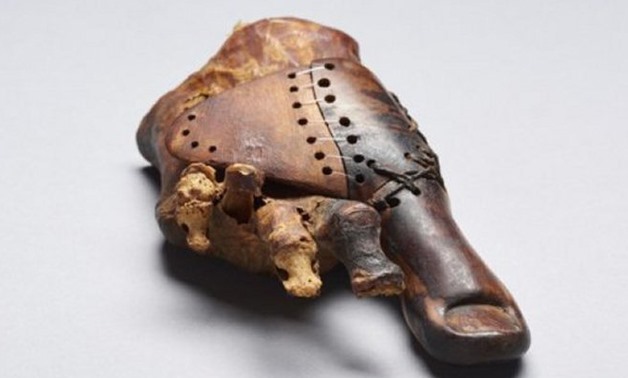
Prosthetic toe - Courtesy of the University of Basel
CAIRO - 25 June 2017: An artificial toe dating back 3,000 years shows that ancient Egyptians were proficient with prosthetic technology, according to a Thursday report by CNN. It is considered to be one of the oldest prosthetic devices in human history.
The mummified remains containing the wooden prostheses were originally discovered in 1997 in Sheikh Abd el-Qurna, near Luxor.
"By using a sophisticated way of fixing the individual parts of the prosthesis to each other, the artificial limb had a balancing effect and gave, to some extent, a freedom of movement," Andrea Loprieno-Gnirs of the University of Basel told CNN.
The recent analysis conducted on the toe was carried out by the Egyptian Museum in Cairo, the University of Zurich and the University of Basel, who worked together to study the wooden toe through x-ray and computer technology.
The study found that the wooden toe belonged to a priest’s daughter and was refitted to her foot several times. The toe was found inside a shaft dug into an older burial chapel in Sheikh Abd el-Qurna. Belonging to a group of monumental rock-cut tombs from the late 15th century BC, the chapel was built for an upper class family that was in close connections to the royal family.
Comments
Leave a Comment